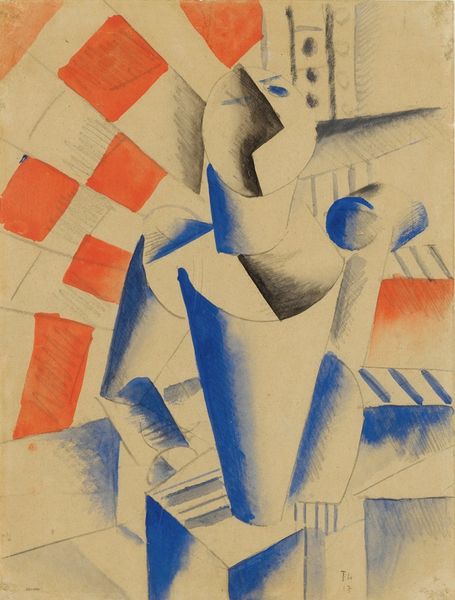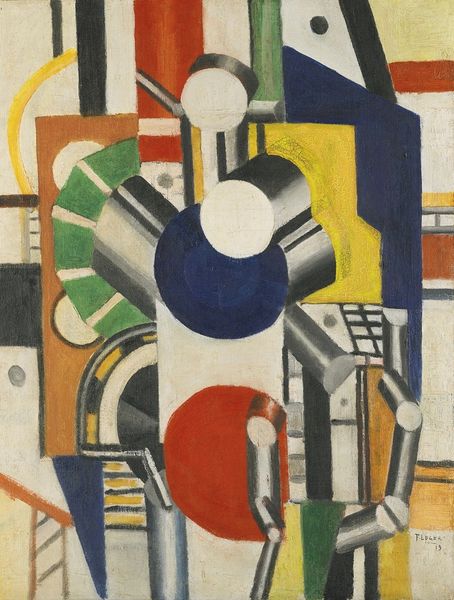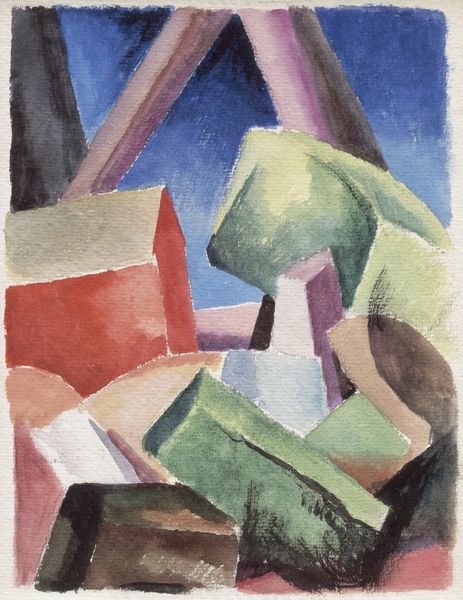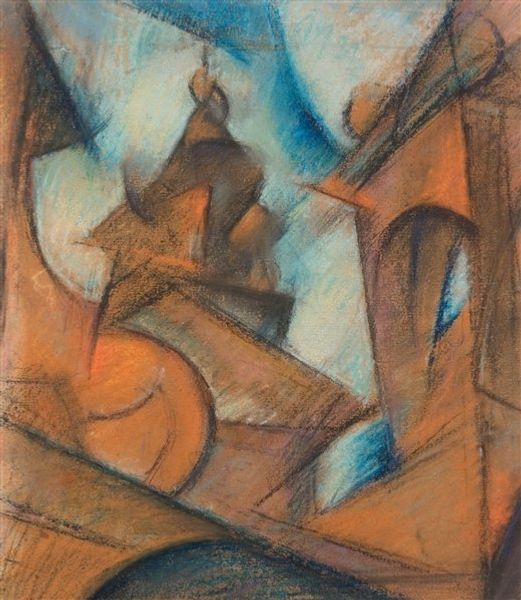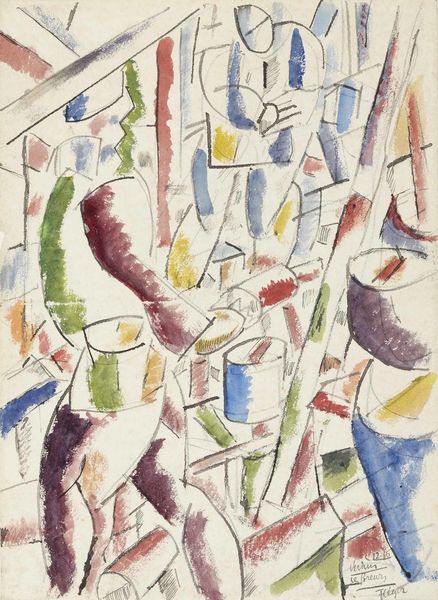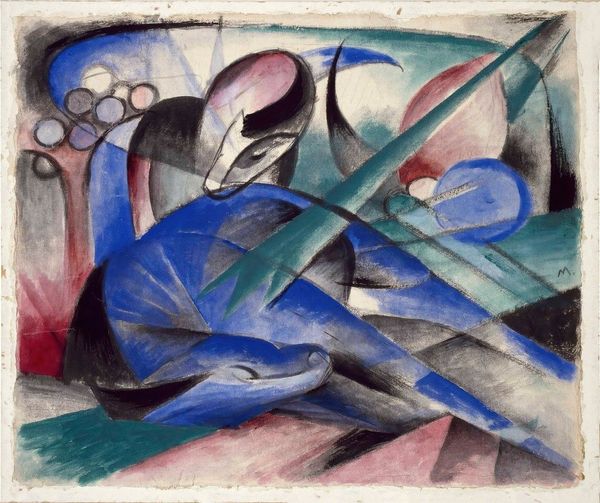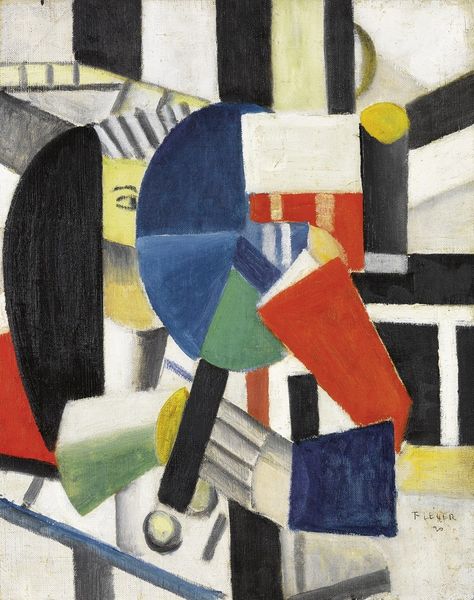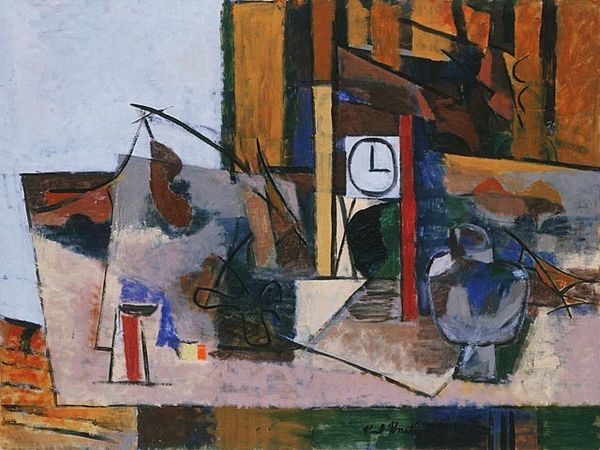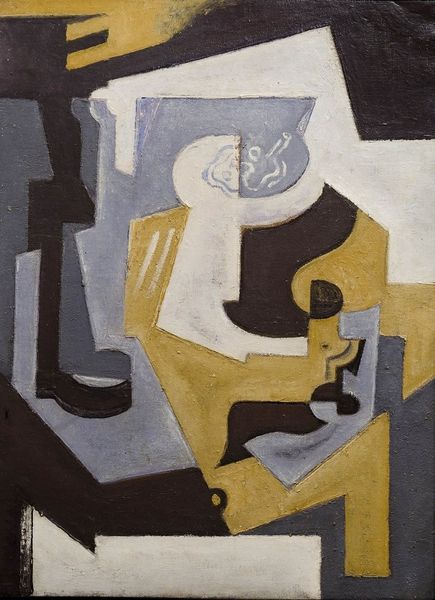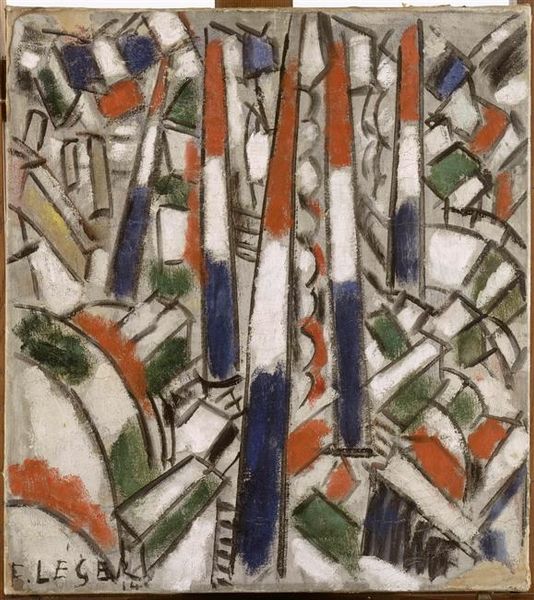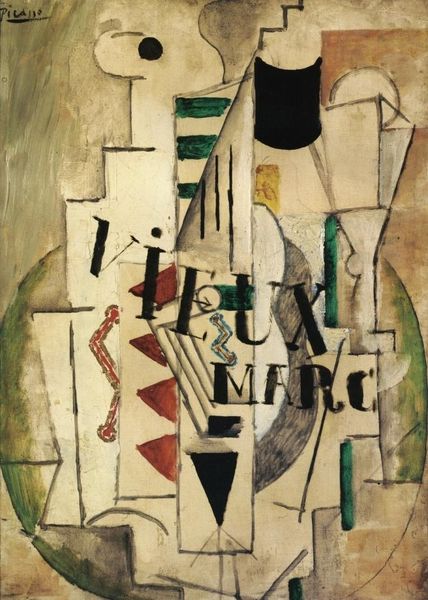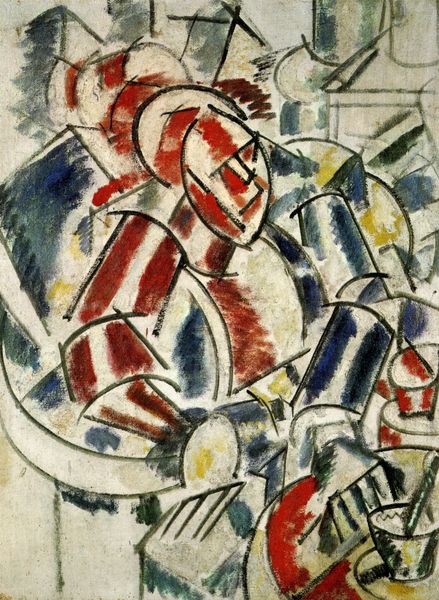
painting, oil-paint
#
cubism
#
non-objective-art
#
painting
#
oil-paint
#
oil painting
#
geometric
#
abstraction
#
modernism
Dimensions: 46 x 55 cm
Copyright: Public domain US
Curator: Fernand Léger's "Contrasts of Forms," painted in 1913, is a key piece in understanding the evolution of early modernist painting, specifically Cubism. Made with oil paint, this artwork is now housed at the Musée National Fernand Léger in France. Editor: My immediate impression is… disrupted geometry. It feels very raw and elemental, but also somehow industrial. Those colours—red, white, and blue—they vibrate against the beige background. Curator: Léger was indeed fascinated by industrialization. Notice how he's broken down familiar forms into cylinders, cones, and cubes. It mirrors the rapid industrial expansion of the time and a fascination with machines. These aren’t landscapes, but a reflection on modernity, wouldn’t you agree? Editor: Absolutely, and those forms are compelling—they're like archetypes. Cylinders always evoke strength and stability, while those angular blocks could suggest the fracturing of traditional values during that era. What do you see reflected regarding French society in particular? Curator: France at the time was grappling with its identity, caught between tradition and embracing progress. The tricolore palette points, of course, to the Republic, yet it’s a fractured image of it. I find it quite revolutionary for the period in that respect. Editor: Right, and I think we tend to forget just how emotionally unsettling this kind of abstraction was for audiences at the time. Familiar symbols stripped bare. The cultural memory, once so obvious, suddenly fractured and needing reinterpretation. Curator: It certainly challenged viewers accustomed to more conventional representations of the world. By rejecting direct representation, Leger invited viewers to engage actively in meaning-making, which remains an intriguing concept today. Editor: It is intriguing indeed. It reminds us of how symbols are never static; their meaning always shifts and reshapes with time. Leger was tapping into that core instability. Curator: Precisely. By breaking down the known, he invited reflection and created space for new cultural meanings to emerge in a rapidly evolving world. Editor: A striking work of visual art. It's almost haunting once you delve into its layers. Thank you for sharing that with me!
Comments
No comments
Be the first to comment and join the conversation on the ultimate creative platform.
